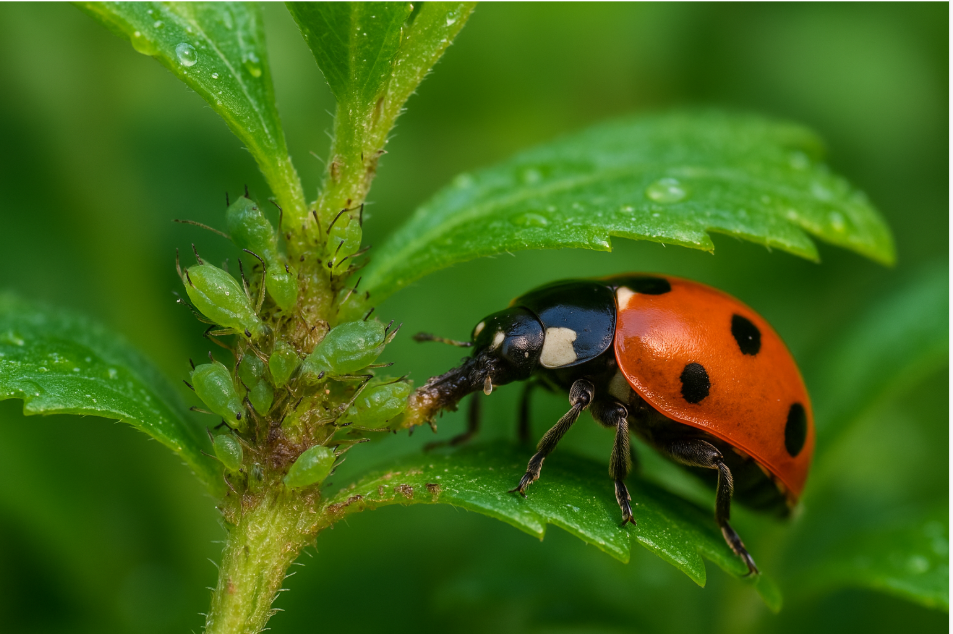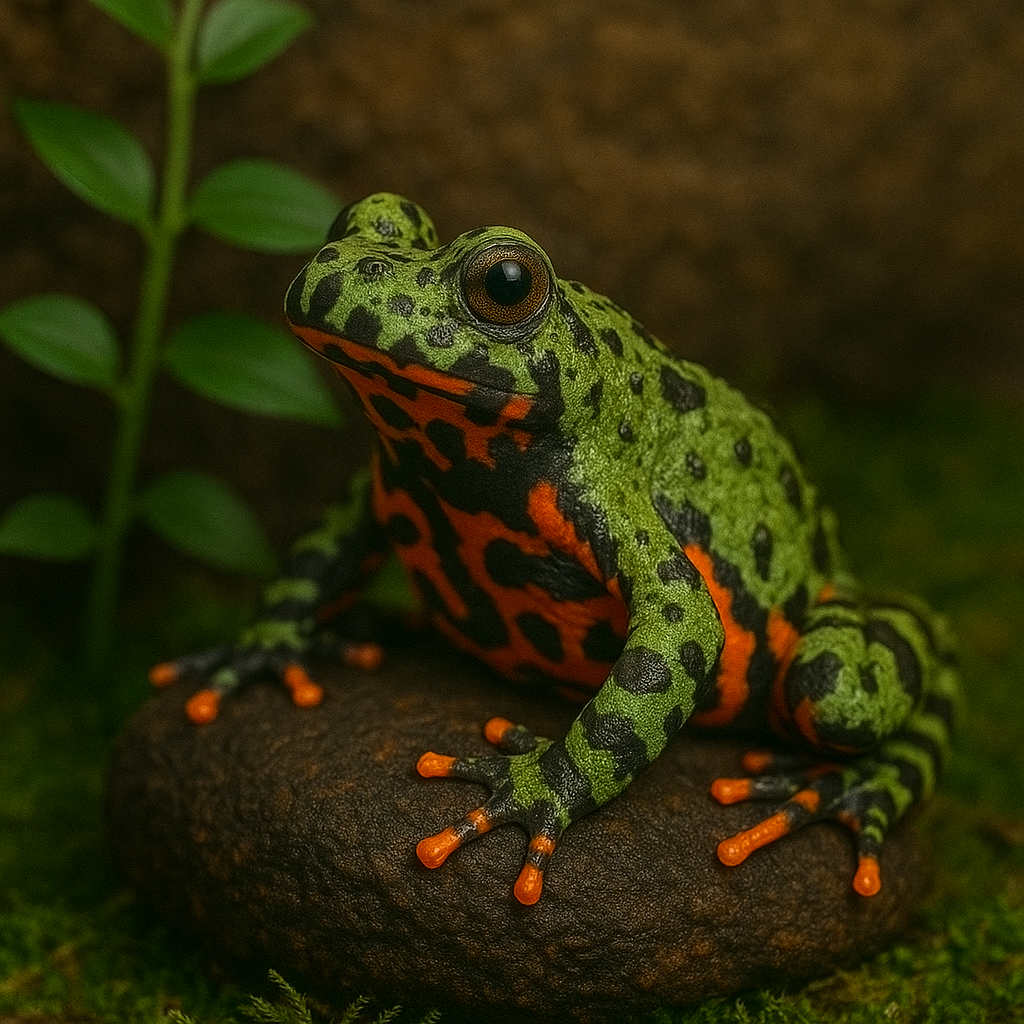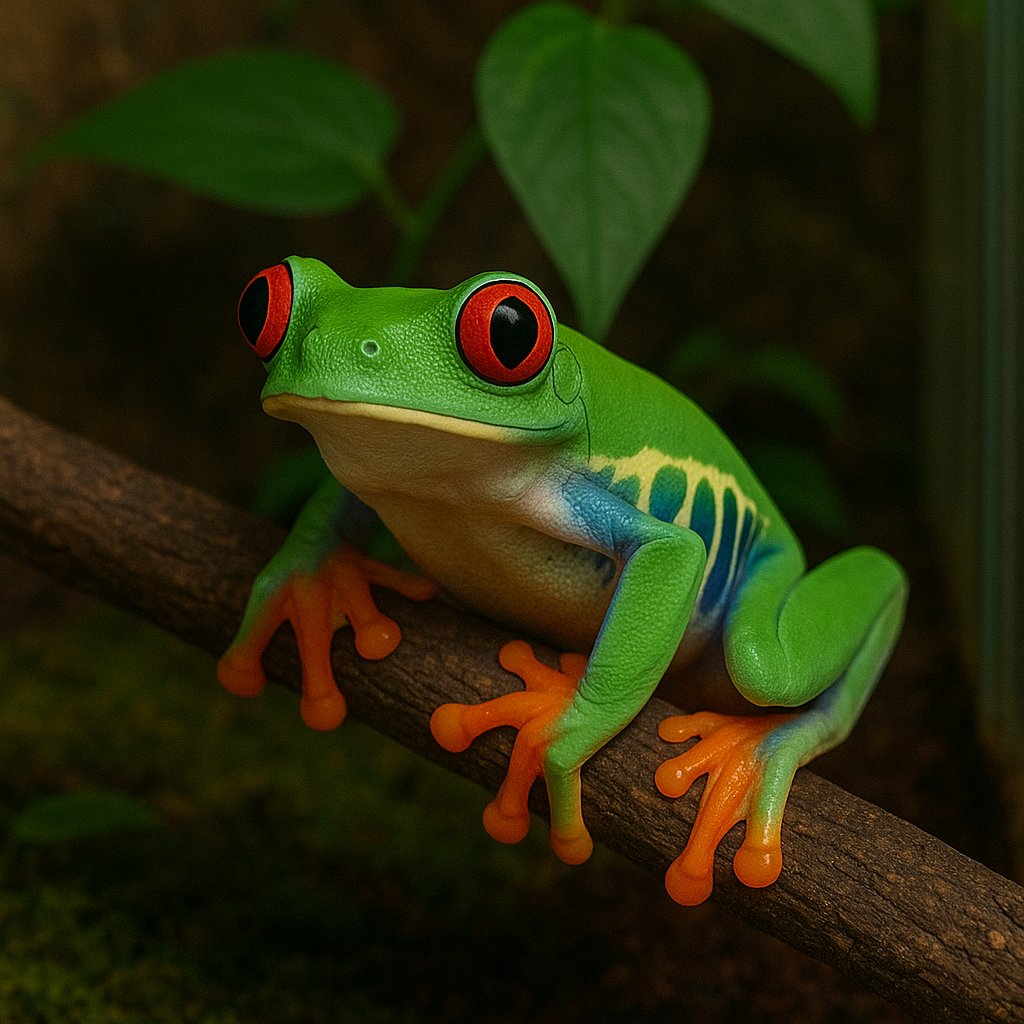As spring gives way to summer, many vivarium and terrarium keepers begin to notice a familiar—and often dreaded—sight: tiny green, black, or yellow aphids clustering on tender new growth. These sap-sucking insects can quickly spiral from a minor curiosity to a full-blown infestation, stressing or killing ornamental plants and disrupting the delicate balance of your miniature ecosystem.
But at Frogfather.co.uk, we take a slightly different stance—especially in vivariums that house dart frogs. In this long-form guide, we’ll explain what aphids are, why they reproduce so quickly, the damage they cause, and most importantly, how to control them in a bioactive setup. Whether you’re battling an outbreak or considering whether aphids can play a beneficial role in your enclosure, this guide is for you.
What Are Aphids?
Aphids (Aphidoidea) are small, soft-bodied insects that feed by inserting needle-like mouthparts into plant tissue and sucking out sap. They come in a variety of colours—most commonly green, black, or yellow—and range in size from 1–3mm. While they may look harmless, they are among the most efficient and prolific pests in the plant world.
There are over 4,000 known species of aphids, many of which specialise in particular host plants. In the controlled environment of a terrarium or vivarium, they can thrive without their natural predators, multiplying unchecked unless managed effectively.
How Quickly Do Aphids Reproduce?
Aphids are reproductive powerhouses. Under ideal conditions—temperatures between 20–25°C and high humidity—aphids can reproduce asexually via a process known as parthenogenesis. A single female aphid can give birth to live young (clones of herself) without mating. Each of these offspring may mature and begin reproducing within 7–10 days.
In a matter of weeks, you can go from a handful of aphids to hundreds or even thousands. Because of their rapid reproductive cycle and tendency to hide under leaves or inside bromeliads and moss tufts, infestations can catch even seasoned keepers off guard.
The Damage Aphids Cause to Plants
In terrariums and planted vivariums—especially those with ornamental or slow-growing species—aphids can be highly destructive:
- Sap Drainage: Aphids drain essential nutrients, weakening the plant and stunting growth.
- Leaf Curling and Yellowing: Infested leaves often curl or yellow due to stress.
- Sooty Mould: Aphids excrete a sugary substance called honeydew, which promotes fungal growth.
- Attraction of Other Pests: Honeydew can attract ants and other insects.
- Transmission of Disease: Aphids can spread plant viruses through their feeding.
For those maintaining carefully planted terrariums without animal occupants, an aphid infestation can quickly become a serious concern.
Are Aphids Ever Beneficial?
Surprisingly—yes. In vivariums that house dart frogs or other insectivorous amphibians, aphids can be a welcome addition. At Frogfather.co.uk, we actively encourage the presence of aphids in frog vivariums, especially in the early months of establishing a new bioactive enclosure.
Why?
- Natural Dietary Enrichment: Dart frogs, especially thumbnails like Ranitomeya spp., benefit from a diverse diet. Aphids offer movement, size, and scent variation that stimulate natural foraging behaviour.
- No Need for Supplementation: In a balanced bioactive system, aphids feed on plant sap and reproduce without additional inputs.
- Self-Limiting in Predator-Occupied Tanks: Dart frogs will quickly reduce aphid numbers, preventing overpopulation.
That said, aphids are not suitable in every context—and they’re certainly not welcomed in showpiece terrariums or setups without active predators.
How to Control Aphids in a Bioactive Setup
When aphids overpopulate or appear in enclosures without frogs, action is needed. The usual pesticides or soapy sprays used in houseplant care are not appropriate in bioactive environments. They can disrupt microfauna, harm mosses and ferns, and leave residues dangerous to amphibians.
Here’s how we recommend managing aphids naturally and effectively:
1. Manual Removal
For small outbreaks, you can remove aphids by:
- Squashing visible clusters with a cotton bud.
- Rinsing leaves gently with a spray of dechlorinated water.
- Pruning and removing heavily infested foliage.
This method works best early in an outbreak but can become labour-intensive.
2. Boosting Microfauna
Healthy populations of springtails and isopods may help slow aphid spread by consuming honeydew and mould, but they won’t target live aphids. Still, they support plant recovery and overall vivarium balance.
3. Introducing Predators: Ladybirds and Nymphs
Our go-to solution at Frogfather.co.uk—and easily the most effective—is the introduction of ladybirds (Coccinellidae), particularly ladybird nymphs. These aphid-eating machines can clear an infestation in days, and their appetite is legendary.
- Why Nymphs? They don’t fly away, have a ravenous appetite, and stay close to aphid colonies.
- How Many? We recommend introducing 3–4 ladybirds or ladybird nymphs per vivarium.
- Best Use? This method is ideal for bioactive enclosures that are still ageing or do not yet house dart frogs, ensuring no risk to amphibians.
Spring and early summer are the best times to find ladybird nymphs outdoors—check nettles, roses, or hedgerows. Alternatively, you can purchase native British species online from reputable suppliers.
What About Planted Terrariums Without Animals?
If you have a terrarium purely for plants and decorative mosses, you may not want aphids at all. In this case:
- Ladybird introduction remains the safest biological control.
- Ensure no escape route for ladybirds into your home (a mesh top or temporary cling film cover can help).
- Neem oil and insecticidal soaps should be avoided in closed ecosystems unless plants are removed and treated outside the enclosure.
- Quarantine new plants before adding them to prevent reinfestation.
Frogfather’s Final Thought
At Frogfather.co.uk, we believe every element in a vivarium plays a role—including the ones that wriggle, crawl, or nibble. Aphids might be a nuisance in some setups, but in the right environment, they can be a useful part of a natural food web. Whether you’re curating a display terrarium or raising dart frogs, working with nature—rather than against it—is always the smartest move. And when things get out of balance, let the ladybirds lead the clean-up crew.



